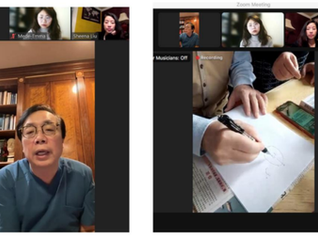إطار الوصول إلى الأدوية
تستغرق الموافقة على الأدوية التي تم اعتمادها في دولة ما سنوات طويلة لتصبح متوفرة عالميًا، بسبب غياب نظام موافقة عالمي موحّد. ونتيجة لذلك، يعاني المرضى أو يفقدون حياتهم دون داعٍ أثناء انتظار وصول الأدوية إلى بلدانهم. من الضروري أن يتغير هذا الوضع.
لذا، تسعى شركة Medebound HEALTH إلى تسريع تقديم الأدوية المبتكرة من جميع أنحاء العالم لتلبية الاحتياجات الطبية المحلية غير المُلباة للمرضى.
نحن نرى دورنا في إيصال العلاجات العالمية المبتكرة إلى المرضى عبر وسائل متعددة، تحقيقًا لمهمتنا المتمثلة في توسيع نطاق الوصول إلى رعاية صحية ذات جودة عالية حول العالم.
وندعو شركات التكنولوجيا الحيوية وصناعات الأدوية الحيوية المهتمة بمساعدة المزيد من المرضى الذين لا يستطيعون الوصول إلى أدويتهم للتواصل معنا.

برنامج علاجي مُخصّص للمريض مدعوم بالتكنولوجيا باستخدام
(RWE)بيانات العالم الحقيقي
نلتزم بالتعاون مع شركات الأدوية الحيوية العالمية لتقديم الأدوية المبتكرة إلى منطقة آسيا والمحيط الهادئ، مستفيدين من خبرتنا في شبكات الخبراء الطبيين (KOLs)، والتراخيص التنظيمية، وإدارة اللوجستيات.
يعتمد هذا النهج على برنامج المرضى المسمّين (Named Patient Program - NPP)، حيث يحصل المرضى على كميات صغيرة من الأدوية التي تُستخدم فقط لتخفيف حالة مرضية مزعجة تخصهم بشكل شخصي.
وبذلك، يمكننا إدارة برنامج NPP للوصول المبكر، مما يسمح لشركات الأدوية الحيوية بدخول الأسواق الآسيوية عبر هذا المنهج، سواء أكانت ترغب في الحصول على ترخيص تسويقي في هذه الأسواق الناشئة أم لا.
نحن نوفر الخبرات والموارد اللازمة، بالإضافة إلى منصة تقنية متقدمة لدعم أدلة من العالم الحقيقي (RWE)، والتي تُمكّننا من إدارة كل طلب فردي لهذه الأدوية الجديدة بكفاءة وفعالية.
التوزيع الحصري/التسجيل
بفضل خبراتنا المتخصصة في اللوائح والإطارات القانونية الخاصة بمنطقة آسيا وشبكتنا الواسعة التي تضم الأطباء الخبراء (KOL) والمستشفيات في آسيا، يمكن لشركات الأدوية التي تتخذ من الولايات المتحدة أو الاتحاد الأوروبي مقرًا لها الاستفادة من خدماتنا لتسجيل منتجاتها للحصول على الموافقات التنظيمية المحلية، بالتوازي مع إمداد برنامج المرضى المسمّين (NPP) من خلال القنوات التنظيمية المناسبة.
بفضل تقنيتنا الخاصة متعددة اللغات لجمع البيانات، نعمل على تسهيل عملية جمع الأدلة من العالم الحقيقي (RWE) بشكل مستمر وتقييم المؤشرات الرئيسية. بالنسبة للمنتجات المُرخّصة لدينا، نتولى قيادة جميع مراحل التطوير السريري. وبعد الحصول على التسجيل القانوني في الدولة أو المنطقة المستهدفة، نتعاون مع موزعين محليين وإقليميين لتسويق المنتج.

الريادة في نشر الأدوية في آسيا












